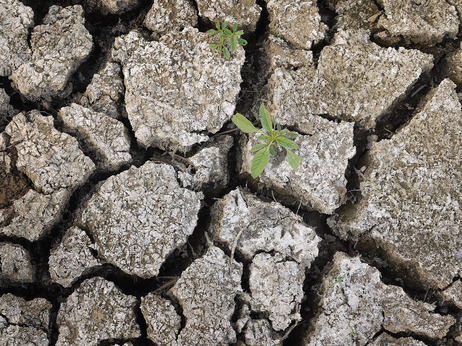|
|
|
Due to drastically low Chinook salmon abundance, the California ocean and in-river salmon fisheries completely closed during 2008 and 2009, to allow the salmon population time to recover. Following the two-year closure, the salmon fishery re-opened with a severely curtailed season in 2010 followed by a more robust fishing season in 2011. This year marks the first year of "normal" recreational and commercial salmon fishing since California's fall-run Chinook salmon crash.
The Central Valley recreational salmon fishing season officially began on July 16 on the Sacramento, Feather, American and Mokelumne rivers, and several areas will remain open well into December. The Mokelumne River will be open to salmon fishing for the first time in four years. However, the San Joaquin River and tributaries will remain closed to salmon fishing during 2012 to allow more time for abundance levels to increase. From all of the buzz, it's clear that Central Valley anglers are enthusiastic about the predicted good salmon runs this season.
The return to a "normal" fishing season was prompted by the strong abundance projections (i.e., 819,400) for Sacramento River fall-run Chinook (SRFC) salmon this year. While the California Fish and Game Commission sets the instream fishing seasons, their decision is based on the abundance forecasts made by the Pacific Fishery Management Council (PFMC). The abundance forecast, or Sacramento Index (SI), includes the number of SRFC projected to contribute to escapement (that is, the number of adults returning to freshwater to spawn) and the number available for commercial and recreational harvest. These values were predicted to be 455,800 returning adult spawners and 363,600 harvested salmon, respectively in 2012. You may recall from a previous post, the abundance forecast for this year was based on a very limited data set. Now that the 2012 salmon fishing season is underway, we will have to wait until all numbers are in at the end of the season to see how close the PFMC was to the actual 2012 SI using a more conservative approach for forecasting the abundance estimate.
In the meantime, reports from commercial and recreational ocean fishing indicate a great salmon season is underway, with most boats obtaining their limits. In fact, according to recent news reports, so many salmon have been caught that the price of fresh Chinook dropped considerably and commercial fishermen went on a five day strike in Half Moon Bay, where processors were only paying $2.75 a pound, but fish were selling at the market for up to $20 a pound. The strike was short-lived and the commercial fishing boats are back to fishing after processors agreed to pay $3.50 per pound. Although salmon prices are still retailing for near $20 per pound, some supermarkets may lower their prices if salmon fishing remains excellent. Unfortunately for those Californians in the Central Valley looking to reel in their own Chinook, opening day for in-river fishing was a bust; however, it is still early and fall-run Chinook salmon won't be ascending most rivers until August. |
|
|
|
|
IN THE NEWS: Recent stories you might have missed...
|
Plan to release more water from Trinity dam
The Times-Standard
 A plan has been drafted to increase water flow from the Trinity River dam in order to prevent a repeat of the massive fish kill on the Klamath and Trinity rivers that occurred in 2002.The U.S. Bureau of Reclamation issued a draft environmental assessment and a draft finding of no significant impact suggesting that it allocate 48,000 acre feet of water from the Trinity Reservoir beginning Aug. 15, if needed...Read more> A plan has been drafted to increase water flow from the Trinity River dam in order to prevent a repeat of the massive fish kill on the Klamath and Trinity rivers that occurred in 2002.The U.S. Bureau of Reclamation issued a draft environmental assessment and a draft finding of no significant impact suggesting that it allocate 48,000 acre feet of water from the Trinity Reservoir beginning Aug. 15, if needed...Read more>
|
|
Fish confirmed above Condit Dam
The Columbian

Wildlife officials this week confirmed migrating fish in the upper White Salmon River-a sight not seen in almost a century, since a hydro-electric dam first blocked the waterway in 1913. Scientists with the Yakama Nation Fisheries program and the U.S. Geological Survey spotted jumping fish, likely adult steelhead, at both Husum Falls and BZ Falls. Both locations are well upstream of Condit Dam, which was breached with a blast of dynamite in October...Read more>
|
Can Adding Iron To Oceans Slow Global Warming?
NPR

A noted oceanographer once quipped that if you gave him a tanker half-filled with iron, he could give you an ice age. He was only half-joking. Adding iron to the ocean can cause blooms of algae, which have the potential to take huge amounts of carbon dioxide out of the air and by so doing, cool the planet. And a report in Nature magazine now offers some support for that idea...Read more >
|
|
Tuna, on its way to becoming luxurious food
FIS

In the not too distant future, tuna catches will be reduced significantly and its products will become more expensive, for a minority, forecasts the general secretary of the National Association of Canned Fish and Shellfish Manufacturers (Anfaco-Cecopesca) Juan Manuel Vieites.
According to the official, from 2007 to date, tuna catches have stabilized at about 4.2 million tonnes per year...Read more >
|
|
Drought In U.S. Now Worst Since 1956
NPR

With about 55 percent of the continental U.S. suffering from "moderate to extreme drought" conditions the nation is withering under conditions that haven't been this bad since 1956, according to a new report from National Climatic Data Center.And this "worst-in-a-generation drought from Indiana to Arkansas to California is damaging crops and rural economies and threatening to drive food prices to record levels," Bloomberg News warns...Read more >
|
|
|
|
|
|